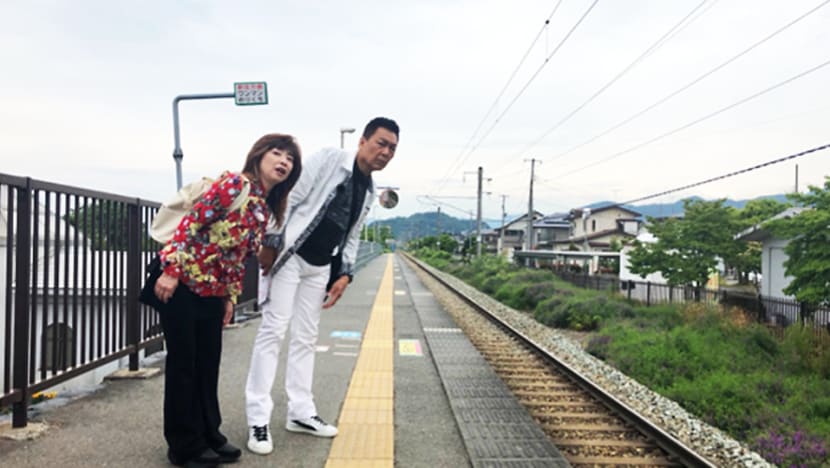Road Trip on Ōu Main Line (Part 1)
Highlights this week are an orchard which has a tree house and a gallery selling pottery; an eatery serving authentic and healthy Korean dishes; and an award-winning lunchbox with Yonezawa beef.

Our next two-day journey of enquiry and discovery takes place on the JR Ou Main Line. We will travel from Fukushima Station in Fukushima Prefecture to Shinjo Station in Yamagata Prefecture, covering 36 stations and a total distance of 148.6km. From Fukushima Station, we first travel to Niwasaka Station, two stops away. The journey takes about 10 minutes and we reach Niwasaka at 8.40am.
The locals we speak to recommend three places - an orchard called Anzai Kajuen, an old two-storey Western-style building nicknamed Seiyokan near Umenoki Park and a Korean eatery called Iyashi Cafe. We make our way to Seiyokan first. It was built 100 years ago during the Taisho period by the current owners’ great-grandfather, who was a member of the Diet, the country’s legislature. He used to take a steam locomotive to Tokyo, where he was inspired by the city’s modern Western culture. The historical building with a modern Taisho atmosphere has been maintained well and different parts of the house have been repaired when necessary.
After this, we walk to the Anzai Kajuen orchard. We meet Mr Anzai, who tells us it was established more than 100 years ago. Peaches are harvested in the summer, while apples are grown between fall and winter. The orchard’s products made with fruit juice are very popular. One of the orchard’s highlights is a tree house named Juliet, which was built about seven years ago. It was part of Shigesato Itoi’s project to build 100 tree houses in the Tohoku region. The deck around the tree functions as a stage where people can hold concerts. The orchard also has a gallery where carefully selected pottery made by potters from all over Japan are sold, along with other household goods. There is also a lodging facility here, where travellers can come and relax.
Our next stop is Iyashi Cafe, which is a 10-minute walk from the orchard. The owner is a Korean lady who moved to Japan 35 years ago. The buffet-style restaurant serves 20 different kinds of authentic and healthy dishes, including pancakes, onion kimchi and Yakuzen curry. The curry is prepared using a medicinal cooking method and includes ingredients such as Jerusalem artichokes and homegrown herbs.
We then take the train departing at 1pm and go to Yonezawa Station, six stations ahead. We arrive at 1.40pm and have an hour to explore the area. A resident suggests we try the speciality Gyuniku Domannaka lunchbox, which is popular among station lunchbox fans. It won the top prize in a competition, Ekiben Aji no Jin, for station lunchboxes. The lunchbox includes Yonezawa beef and local Domannaka rice.
After trying the famous lunchbox, we take the 2.40pm train to Akayu Station, three stops ahead. During the 15-minute train journey, we enjoy the view of the nostalgic Japanese landscape and rice paddy fields. A local at Akayu us that the Eboshiyama Hachimangu Shrine is a famous place in this hot spring town. It was built in 1890 and 1,000 cherry trees have been planted there. We have to climb several steps to get to the shrine, which is loved by the local residents. The most symbolic part of the shrine is a large torii. It is the largest seamless torii made from one piece of stone in all of Japan.
We return to Akayu Station and take the train at 4.45pm to Kaminoyama Onsen Station, three stops away. We reach in about 20 minutes and start looking for a hotel. A gas station staff suggests we stay at Hotel Koyo. We call the hotel and it has rooms available. We then take a shuttle bus from the station and arrive at the hot spring hotel in five minutes. It has been chosen by different professionals as one of Japan's 100 best hotels. It was built on the site of an old kiln which was used during the Nara period to make pottery to be offered to gods. The hotel holds pottery workshops where people write words or draw on plates. There are about 3,000 plates on display at the hotel.
The hotel offers 18 different types of rooms and has more than 130 rooms in total. Our modern Japanese-style room has a spacious deck and a connected semi-open-air bath boasting an incredible view. After indulging in a refreshing hot spring bath, we have dinner in a private dining room. The chef prepares 12 dishes cooked with seasonal ingredients from Yamagata. They include masu salmon, locally grown edible wild plants, Yonezawa beef and abalone steak.
Tips:
1) The Anzai Kajuen orchard near Niwasaka Station has a charming tree house and even a pottery gallery
2) A must-try speciality at Yonezawa Station is the Gyuniku Domannaka lunchbox










